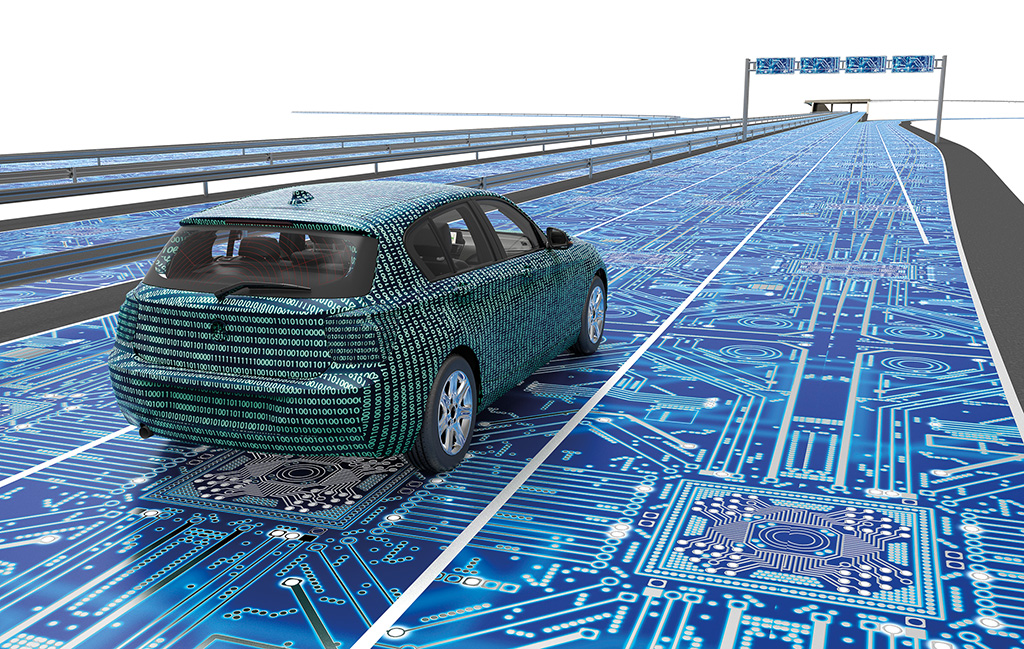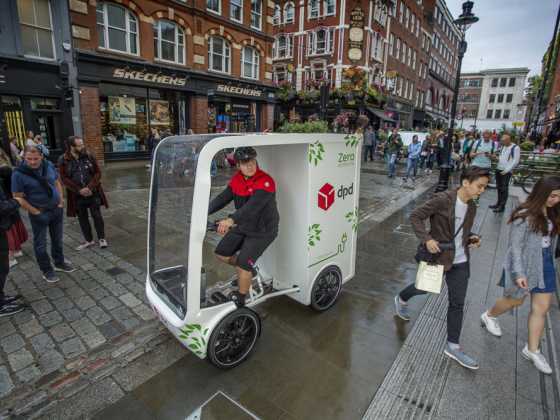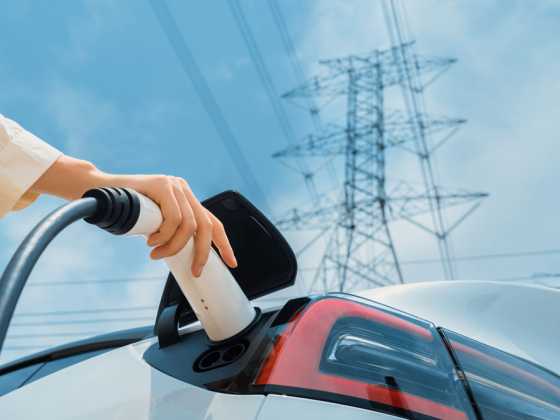A change in direction for travel

With the advent of self-driving cars and connectivity increasing new mobility trends such as car sharing, ride sharing and e-hailing, technology is changing how we travel. Shwetha Surender and Benny Daniel from Frost & Sullivan explain further
The automotive industry has been heavily influenced by a few key technology trends that have the potential to change the current structure, ecosystem and value proposition.
Increasingly the industry is shifting away from the car as a product to the car as a service.
The first technology trend is the boom in the number of connected devices. Every meter, every household, every person will be connected by 2025. Today more smartphones are sold annually than cars. Devices are growing at a pace that is five times that of populating growth.
The connected device universe is expected to explode from less than five billion today to 80 billion by 2025. This is going to essentially facilitate connected car communication as well as the new mobility services that are evolving.
Connectivity is going to serve as the under bed that is required for all future digital services.
Artificial intelligence
The second key trend is the evolution of AI (artificial intelligence). In a world of cognitive artificial intelligence, machines will be able to make their own decisions simply because there will be more insightful real time data that gives them the context to make sense of it and react just like a human would.
In future, cars will be cognitive – not only will they recognise voices and be able to optimise the journey, they will also incorporate other cognitive technologies of AI – computer vision and machine learning. This will change the future of cars, challenge traditional business models and create immense potential for innovation.
The first step in this journey is the automation of cars. Frost and Sullivan forecasts eight million semi and highly automated vehicles to enter the market in the next 10 years. Legislation will be the primary determinant of commercialisation of the technology.
Whilst there continues to be ambiguity concerning the legislation of autonomous vehicles; fully automated cars are expected to be commercialised by 2025 which is a $84bn per annum market opportunity.
Commercialisation of autonomous vehicles will have far reaching impacts. For instance, in the trucking industry 300,000 truck drivers could lose their jobs due to automation. The entire landscape as well as the future of cities will change.
Smart technology
The next trend is how the concept of ‘smart’ is evolving in various industries. Looking at the automotive industry in the future, cars are just part of the equation. In a truly smart city, cars will talk to each other as well as the roads, crosswalks, tollways and parking structures.
Vehicles will know they need to keep a safe distance from each other, crosswalks will tell the car to slow down if there is a pedestrian. Cars will update each other on real time traffic. Technology underpins this movement toward smart, be it smart cities or smart mobility within those cities.
An example of the first step toward smart mobility is a pilot project in Manila. The city is collaborating with the World Bank and Grab taxi to analyse Grab taxi’s GPS traffic data and provide accurate, real-time information for initiatives that can help reduce traffic congestion and improve road safety.
Urban problems
The concept of mobility of the future is heavily influenced by these technology trends in addition to other social trends. As a result in the urban mobility landscape, last‑mile connectivity solutions like carsharing, ride sharing, e-hailing and bike sharing are beginning to take off.
These services are growing as they are obviously starting to solve some of the core challenges we face in our cities and in other areas.
This has certainly really underpinned the growth of the car sharing market.
Advances in vehicle sharing technology are one of the biggest drivers for car sharing and connectivity plays a big role here in making it more convenient for customers. For instance, data analytics is used to predict where demand will arise and ensure more effective rebalancing of the fleet.
In some cases customers are incentivised to drop off cars in specific locations.
From a long term perspective, autonomous driving will have a big impact on the model. In the midterm automated parking will make the customer experience more seamless, but the real impact will be when vehicles become fully automated at which point car sharing will start merging with other business models.
In the taxi market as well, autonomous driving in conjunction with an intelligent transport ecosystem is likely is to lead to a paradigm shift. The biggest change would be the reduction of driver cost that technology would lead to, as the driver forms the largest variable cost component.
The second is that the utilisation of each vehicle would increase as the number of daily trips goes up. However, this does not necessarily mean that the global taxi fleet would shrink; rather demand is expected to outstrip the higher utilisation leading to growth for the market.
Total cost of ownership
From the service operator’s perspective the total cost of ownership is expected to fall, as the impact of the variable costs will be much lower. As an end result there will be a drop in fares for the consumer.
The current operating model for e-hailing is also expected to evolve. Today the market is dominated by asset light tech platforms such as Uber. They provide an online platform and charge a commission for connecting drivers and customers.
The model is expected to shift toward an asset heavy business model. There will still be autonomous vehicles that are privately owned that people could rent to the e-hailing firm. However, they will now need to diversify into a model where it relies on fleet from others as well as relies on a fleet of its own.
And that will be regionally impacted, with some cities like London and New York likely to have low private car ownership rates, hence the e-hail firm would own fleets. In suburban regions, it could be an asset light business model where people want to generate revenue out of their cars when it is parked idle.
Smart parking is another market expected to change. Technology has already allowed for the increased the utilisation of parking spaces; we are also seeing the growth of peer‑to‑peer parking, and monetisation of data either by cities or other service providers.
A good example is that earlier in the year TfL opened all of the parking space data at London Underground for the first time and they are allowing third parties to see what spaces are available. They are starting to work out how they can sell that through these third party platforms.
So TfL can benefit from increasing their revenue and are happy to get people to drive to the station and then take their train enabling multi modal transportation.
In Pisa, there is a smart parking pilot that uses and intelligent parking system to help motorists find a free parking space easier and quicker than before, as well as pay for it via their smart phone. Thus we are seeing a broadening of the portfolio from just seeing the availability of parking spaces to plan, book and pay often using a smartphone.
The technology is removing some of the barriers to make parking more seamless.
True mobility
As we move toward the future, to unearth the true potential of shared mobility, mobility is needed to transform how connectivity and autonomous will link. For instance, considering autonomous technology as an individual entity, its whole philosophy of improving safety, convenience and congestion can only be leveraged if there is a connected ecosystem around it that enables it.
The car by itself being autonomous is not enough for the society to benefit, it needs to be underpinned by an intelligent transport ecosystem that makes it autonomous wherever it goes.
In shared mobility, the actual true potential of cost savings from a fleet of taxis or car sharing can be benefited from only if the car can capably drive itself. In the long term the lines between the new shared mobility business models will blur.
There will cease to be a distinction between a ‘drive yourself’ model like car sharing and a ‘be driven’ model like taxis.
At some point when autonomous becomes fully commercialised and the price point falls, these business models will also begin competing with public transport and the entire transportation landscape will see a paradigm shift and there will be convergence across the board.
Industries will look at convergence between connectivity, autonomous and mobility to drive change. Examples of this convergence are the next 100 years of BMW where the platform looks at connectivity, shared mobility and autonomous. Volvo’s Drive me is creating shared platforms that are autonomous and connected. The stakeholder who embraces these three pillars together is the one likely to succeed in the future.
Frost & Sullivan's Intelligent Mobility event takes place June 28-29 at the Jumeirah Carlton Tower, London. See GreenFleet’s events page for more details






